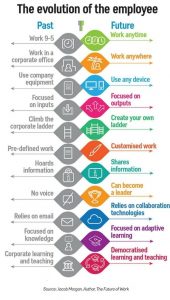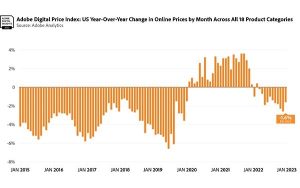
Illustration by Aneeque Ahmed
In the past few years, the data analytics revolution has continued unabated in the worlds of B2B and B2C. The rise of data analytics is resulting in increased budgets and staff to account for the volume of data that can now be computed and accessed. This growth in the volume of data has spawned numerous types of data analytics services provided for marketing and sales management to deal with the ever-increasing volume of data.
Insular We Have Become
While organizations may have decreed that the purpose for all this data crunching is for customer-centricity, something else may be happening unintentionally. That is, the actual outcome is a business by data-centricity versus business by customer-centricity.
Through natural laws of inertia, companies can become insular because of data. Creating a data island unto itself that is consumed by data and exists through data only. With ever-increasing demands for access to data to support initiatives.
An outcome of insularity is organizations can develop an over-reliance on quantitative data in all aspects of a business. Creating an addictive dependency on data analytics, which in turn attempts to reduce all decisions down to an arbitrary quantitative equation. There is a degree of irony to the growing influence of data analytics. It goes something like this:
After decades of senior management making decisions on quantitative data alone, a movement began to incorporate more “voice of the customer” into decision-making at the advent of a new century. The rapid rise of data analytics is causing the opposite effect. Which is, a reinforcement of data and a doubling down on making decisions based on quantitative data alone.
This may be hard to see happening. After all, the data is supposed to be about customers. And, does that not make us customer-centric? The answer lies in whether an organization is consumed by the quantity of data as opposed to a focus on obtaining critical business, as well as, buyer insights. If an organization has become insular about data, the danger they may face is that they may focus disproportionately on the quantity of data versus the quality of business and buyer insights.
Human-Learning Versus Machine Learning
Hot buzzwords steamrolling through 2017 are Machine-Learning, Natural Language Processing (NLP), and Artificial Intelligence. Although all are not the same, the common goal is to make data “smart”. Machines with access to data can learn and this resulting learning contributes towards artificial intelligence that can carry out “smart” tasks. In B2C, this has significant value. For example, in banking, artificial intelligence can recognize patterns of consumer transaction activities and begin to anticipate whether consumers are wanting to perform a deposit, make a payment, or conduct a wire transfer.
Such an ability to learn patterns that lead to artificial intelligence can result in vastly improved customer experiences. This use of artificial intelligence can be harder to achieve in certain B2B markets. However, the impact of machine-learning in industrial settings can be significant.
What executives must think about is what gets stripped away. An over-reliance on data and even in recent developments related to machine learning and artificial intelligence can cause companies to miss the all-important social context. Losing sight of the social context in which problems, issues, goals, interactions, etc. come together to unfold a story.
Stories, including those that are filled with numbers, take place through human learning. Stories are enhanced by quantitative data. And vice-versa, quantitative data is enhanced by stories. A reliance solely on quantitative data and AI/machine learning/NLP will result in the missing out on the crucial understanding of the stories taking place.
Stories From The Best Source
Where do such stories come from? How can organizations learn about the stories taking place in the world of their customers and buyers? The answer is – directly from their customers and buyers. Stories convey what data analytics cannot. The emotions, fears, dreams, situations, and more that make up the fabric of our daily human existence.
With the increasingly over-reliance on data, organizations can get caught up on a data crunching treadmill in search of elusive buyer insights. This is creating a dilemma of sorts. As data analytics firms and services promise ongoing insights, it devalues the notion of insights itself. In a way, commoditizing the concept of insights.
Insights are not something that happens every day or after every data crunching exercise. Unfortunately, the addictive nature of quantitative analyses is setting up an unrealistic expectation that insights can be derived almost daily or weekly.
Insights come from the ability to curate stories, to connect the seemingly unrelated, and to analyze. Insights are derived from the unexpected and the not-so-obvious. It also is uncovered through new connective relationships from what has always been known. Insights then are derived from critical thinking involving human understanding.
Thus, companies will need to view insights as a human-centered process and not a data-centric process alone. To succeed at making insights truly human-centered, companies cannot ignore their best source for understanding the stories that make up the goals and aspirations of their customers and buyers. Their customers and buyers themselves.
The following buyer insights interview gives a sense of how human-centered versus data-centric alone understanding can lead to better-informed decision-making:
“I stumbled onto something by walking by our customer service center. I decided to listen in on some calls and ask questions. What became apparent was not that we had to go after other decision-makers in accounts but how was it that we can empower our existing customers to help others within their organizations. This was a subtle distinction we were not getting from all the reports we ran.”
-Vice President, Product Strategy
The Rise Of Thick Data
To accommodate the evolving data-centric world we are living in, the rise of the term Thick Data has emerged. Thick Data is the collective qualitative research of behavior associated with stories, emotions, mental models, and goals. While such qualitative research has existed for decades, the term is meant to address a shortcoming, as well as, an opportunity.
The shortcoming is that companies are beginning to realize that big data analytics alone will not give them the insights they need to inform future strategies. On the other hand, Thick Data derived qualitatively from their best source – directly from buyers, complemented by big data analytics can lead to opportunities previously unforeseen.
(Where do buyer personas fit in this emerging environment? It is important to reiterate that buyer personas are the communications platform for conveying buyer insights. And, they will only be as good as the buyer insights themselves. For example, many buyer personas are of a poor communications quality because they were built as fact-based role descriptions and not necessarily based on critical deep buyer insights. Buyer personas then can help illuminate Thick Data that help companies to understand the qualitative stories complementing big data.)
The Future: Thick Buyer Insights
The future of achieving deeper buyer insights may very well depend on how well organizations can integrate and complement big data analytics with that of qualitative thick data. The future then perhaps leading to Thick Buyer Insights. A realization that insights cannot be achieved through data alone. Yet, also realizing that data can enhance, as mentioned above, the stories learned from their best source of buyer insights – directly from their customers and buyers themselves.
Business & Finance Articles on Business 2 Community(104)








